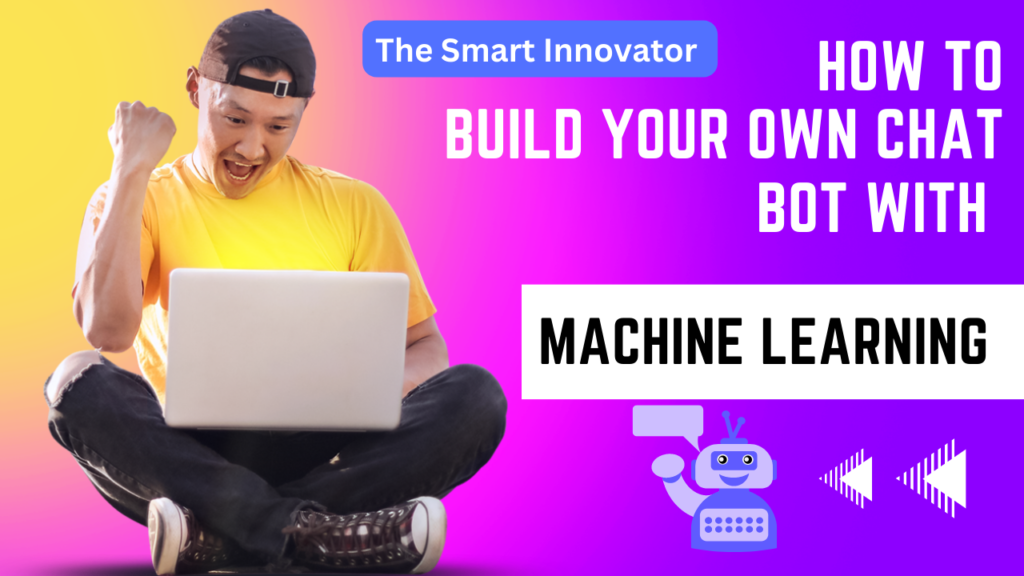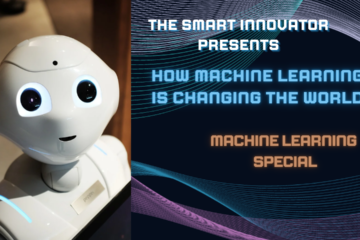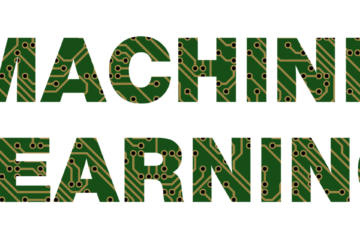How to Build Your Own Chatbot with Machine Learning
If you’ve ever interacted with a customer service chatbot, you might have wondered how it was built. Chatbots are a popular way for businesses to provide quick and efficient customer service. And with machine learning, building a chatbot has become easier than ever before. Let’s explore How to Build Your Own Chatbot with machine learning.
What is a Chatbot?
A chatbot is a computer program designed to simulate conversation with human users, especially over the internet. They use natural language processing (NLP) to understand and interpret what the user is saying and provide an appropriate response.
It utilizes artificial intelligence (AI) techniques, natural language processing (NLP), and machine learning algorithms to understand and respond to user queries. It also understands commands in a conversational manner with that.
Chatbots are commonly used in various applications, including customer service, virtual assistants, e-commerce, and information retrieval. They can be integrated into messaging platforms, websites, mobile apps, or voice assistants, providing users with a convenient and interactive way to seek information or accomplish tasks.
The underlying technology of a chatbot involves multiple components working together to enable effective communication. These components include:
- Natural Language Understanding (NLU): Chatbots use NLU to comprehend user inputs, such as text or speech, and extract the intent and entities contained within the message. NLU algorithms analyze the user’s language patterns and context to interpret the meaning accurately.
- Dialogue Management: Dialogue management is responsible for handling the flow of conversation between the chatbot and the user. It keeps track of the conversation history, manages context, and determines the appropriate responses based on the current state and user input.
- Natural Language Generation (NLG): NLG is responsible for generating human-like responses that are grammatically correct and contextually relevant. It converts structured data or predefined templates into natural language sentences to provide meaningful and personalized interactions.
- Machine Learning: Machine learning plays a crucial role in chatbot development. It enables the chatbot to learn from user interactions and improve its performance over time. By leveraging training data, machine learning algorithms can identify patterns, understand user preferences, and refine the chatbot’s responses to enhance its conversational abilities.
The benefits of using chatbots are numerous. They offer 24/7 availability, instant responses, and consistent customer support, which can lead to improved customer satisfaction and increased operational efficiency. Chatbots can handle multiple inquiries simultaneously, reducing wait times and freeing up human resources for more complex tasks. Moreover, chatbots can gather valuable user data and provide insights that help businesses understand customer preferences, behavior, and needs.
However, while chatbots can automate many tasks and interactions, they have limitations. Understanding complex queries, recognizing nuances in language, and providing contextually appropriate responses can still pose challenges. To address these limitations, ongoing advancements in AI and machine learning are being made to enhance chatbot capabilities.
How Does Machine Learning Help Build Chatbots?
Traditionally, chatbots were built using rule-based systems. Developers would create a set of rules that the chatbot would follow to provide a response to a user’s query. However, this approach was limited by the fact that it could only handle a limited number of scenarios and often provided inaccurate responses.
With machine learning, chatbots can be trained to recognize patterns and make predictions based on data. By using a large dataset of conversations between humans, machine learning algorithms can learn how to provide accurate responses to user queries.
Machine learning plays a crucial role in building chatbots by enabling them to understand and respond to user queries in a more intelligent and natural way. Here are some ways in which machine learning helps in chatbot development:
- 1. Natural Language Processing (NLP): Machine learning algorithms are used in NLP to analyze and understand the meaning of user inputs. NLP models are trained on large datasets to learn patterns, syntax, and semantics of human language. This enables chatbots to extract intent and entities from user messages and accurately interpret user queries.
- 2. Intent Recognition: Machine learning models are trained to recognize the intent behind user queries. By analyzing past interactions and labeled training data, the chatbot learns to map user inputs to specific intents or actions. This allows the chatbot to determine the purpose of the user’s message and respond accordingly.
- 3. Entity Extraction: Entities are specific pieces of information within a user query, such as names, dates, locations, or product names. Machine learning models help in extracting these entities from user messages, enabling the chatbot to understand and utilize relevant information for providing accurate and personalized responses.
- 4. Sentiment Analysis: Machine learning algorithms can be used to analyze the sentiment or emotional tone of user messages. This helps chatbots to gauge user satisfaction, detect frustration, or identify specific needs. Sentiment analysis enables chatbots to adapt their responses and provide appropriate assistance based on the user’s emotional state.
- 5. Response Generation: Machine learning techniques, such as natural language generation (NLG), are used to generate responses that are contextually relevant and human-like. NLG models are trained on large text corpora to learn how to generate coherent and meaningful responses. This allows chatbots to generate dynamic and personalized responses based on the user’s input.
- 6. Reinforcement Learning: Reinforcement learning is employed to train chatbots to optimize their interactions based on feedback. Through reinforcement learning, chatbots learn to improve their responses over time by receiving positive reinforcement for desirable interactions and adjusting their behavior based on negative feedback.
By leveraging machine learning, chatbot developers can create more sophisticated and intelligent conversational agents. These models can continuously learn from user interactions, adapt to user preferences, and improve their performance over time. The iterative learning process of machine learning enables chatbots to become more accurate, efficient, and capable of understanding and engaging in natural language conversations with users.
Building Your Own Chatbot
Now that you understand the basics of chatbots and machine learning, let’s look at how you can build your own chatbot.
Step 1: Define Your Chatbot’s Purpose
The first step is to define the purpose of your chatbot. What do you want it to do? Do you want it to answer customer queries or provide support for your product or service?
Determine the purpose of your chatbot and the specific tasks or functions it will perform. Identify the target audience and the platform or channels where the chatbot will be deployed.
Step 2: Choose a Platform
Next, you’ll need to choose a platform to build your chatbot. There are many platforms available, such as Dialogflow, IBM Watson, and Microsoft Bot Framework. Choose a platform that suits your needs and experience level.
Step 3: Choose a Development Approach:
Decide whether you want to build your chatbot from scratch using programming languages or use existing chatbot development frameworks or platforms. Consider factors such as your technical expertise, resources, and desired level of customization.
Step 4: Design Your Chatbot’s Conversational Flow
Once you’ve chosen a platform, you’ll need to design your chatbot’s conversational flow. This involves creating a set of questions and answers that your chatbot will be able to handle.
Design the conversation flow of your chatbot by defining the possible user interactions and the corresponding chatbot responses. Create a dialogue management system that handles user inputs, triggers appropriate actions or responses, and maintains context throughout the conversation.
Step 5: Collect and Prepare Data
Gather a dataset of relevant conversations or user queries that will serve as the training data for your chatbot. You can use existing datasets or create your own by collecting user queries and their corresponding responses. Clean and preprocess the data to remove noise and ensure consistency.
Step 6: Define Intent and Entity Structure
Identify the different intents or actions that your chatbot should be able to recognize and the entities or parameters it needs to extract from user queries. Define the structure and format of intents and entities based on your specific use case.
Step 7: Train the Natural Language Processing (NLP) Model
Use machine learning techniques to train an NLP model that can understand and interpret user inputs. This involves training the model on your prepared dataset and using algorithms such as intent recognition and entity extraction to teach the model how to process and understand user queries.
Step 8: Train Your Chatbot
Now it’s time to train your chatbot. This involves feeding it data so that it can learn how to recognize patterns and provide accurate responses. You can use your own data or use pre-built datasets that are available online.
Step 9: Implement and Test the Chatbot
Develop the backend logic and frontend interface of your chatbot based on your chosen development approach. Integrate the NLP model, dialogue management system, and any external APIs or services required for your chatbot’s functionality. Test the chatbot extensively to ensure it performs as expected and handles various user scenarios.
Step 10: Test and Deploy
Once your chatbot is trained, it’s time to test and deploy it. Test it thoroughly to make sure it’s providing accurate responses.
Deploy your chatbot on the desired platform or channels, such as websites, messaging apps, or voice assistants. Monitor its performance, gather user feedback, and iterate on your chatbot’s design and functionality based on user interactions and insights.
Step 11: Continuous Improvement
Regularly update and improve your chatbot by incorporating user feedback, analyzing user interactions, and refining the NLP model. Consider adding new features, expanding its capabilities, or integrating with additional systems or APIs to enhance its functionality and user experience.
Building a chatbot is an iterative process that involves continuous learning and improvement. It’s important to gather user feedback, monitor its performance, and make adjustments to ensure your chatbot meets the needs of your users and delivers a seamless conversational experience.
Conclusion
In conclusion, chatbots are powerful tools that revolutionize the way businesses interact with users. They combine AI, NLP, and machine learning to provide personalized, efficient, and engaging conversational experiences. As technology continues to advance, chatbots will play an increasingly vital role in customer service, virtual assistance, and various other applications, transforming the way we interact with technology and access information.
Building your own chatbot with machine learning is a great way to provide quick and efficient customer service. By following the steps outlined above, you can build your own chatbot and improve the customer experience for your business. So how you find this article tell us in the comment section and follow The Smart Innovator for more such cover stories.








0 Comments